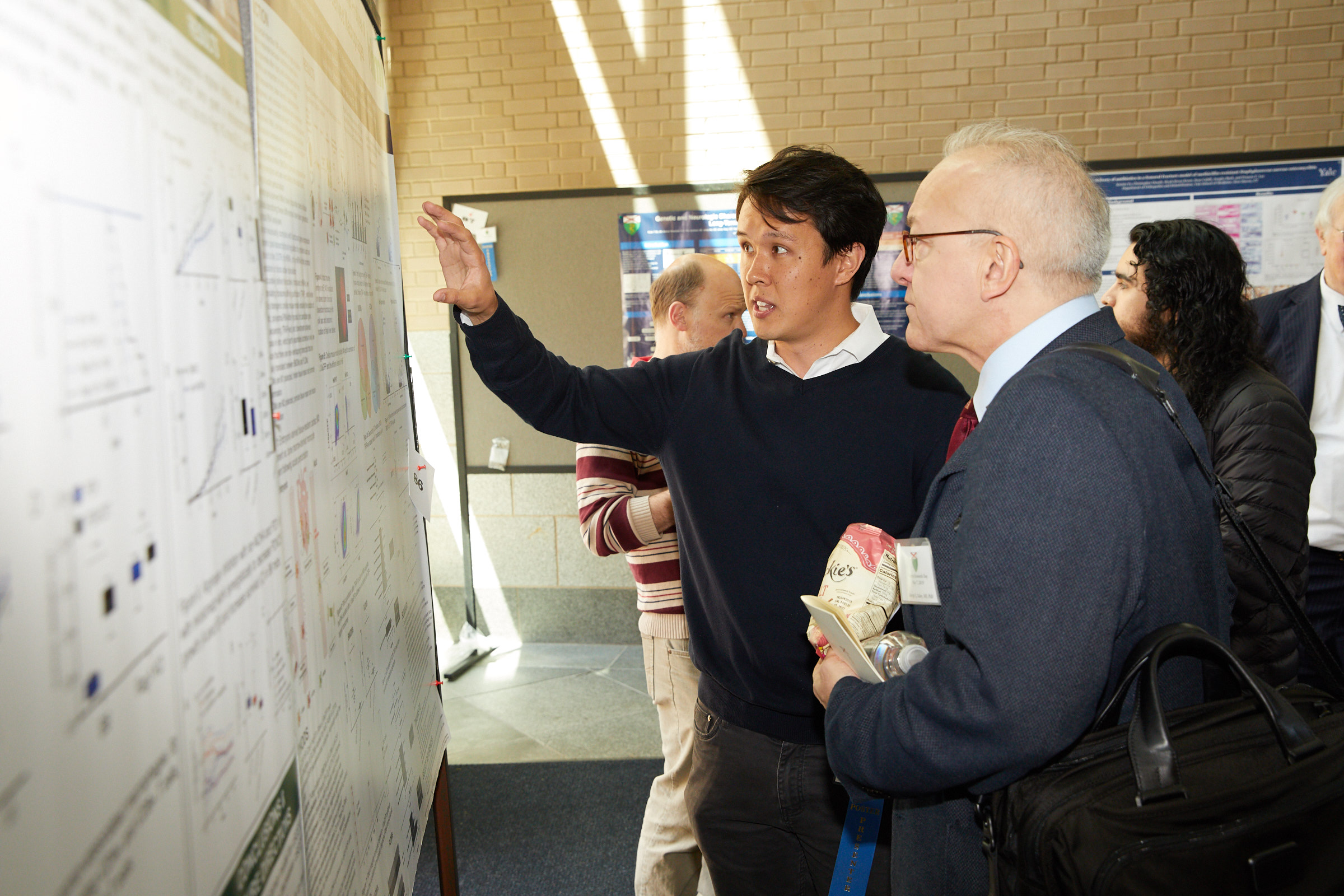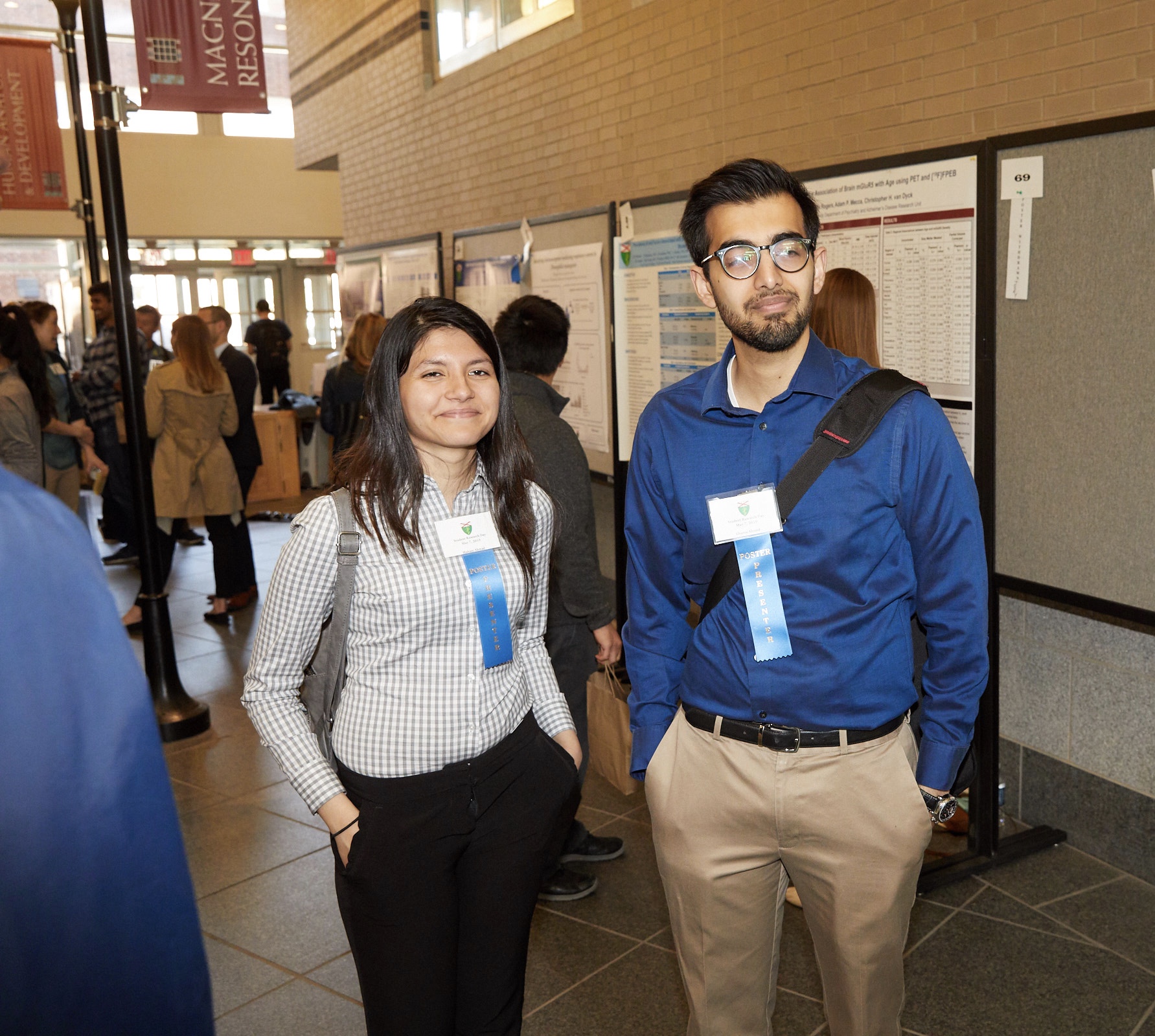On May 7, 2019, members of the Yale School of Medicine (YSM) community and guests gathered in the Anlyan Center (TAC) for the 33rd Student Research Day, an annual celebration of student research and scholarship. YSM classes and all other YSM conferences were cancelled to prevent conflicts with the day’s events, reflecting the value the school places on student research. Clearer evidence of the importance of student research: since 1839, all YSM MD students must complete a thesis before graduating. While originally a case report or literature review satisfied the thesis requirement, theses now must be based on original investigation, either in a laboratory or a clinic.
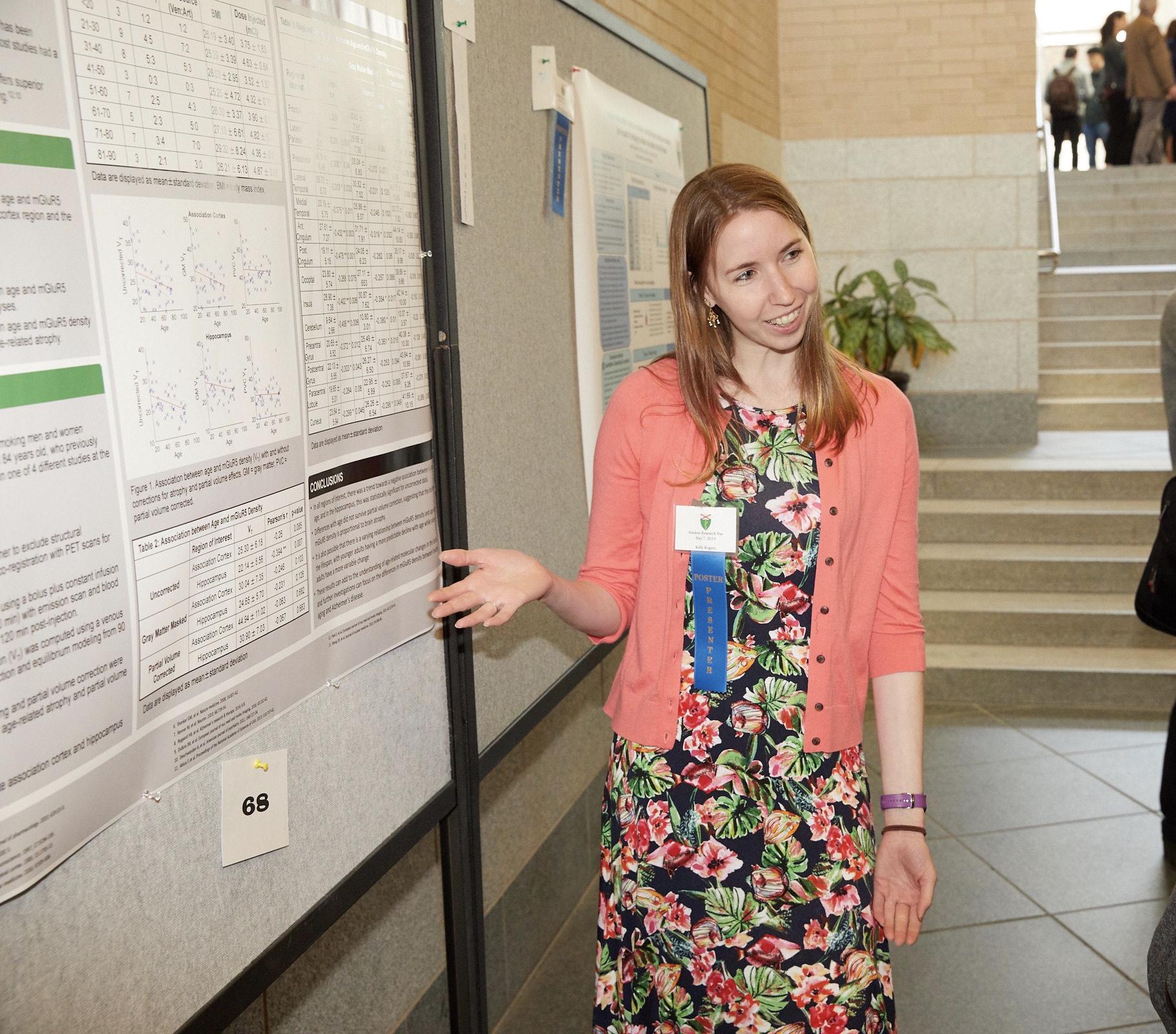
- Pharmacokinectics and pharmacodynamics of a humanized anti-RNLS antibody in C57BL6 mice. Yomi Alimi, Gary Desir, Dept. of Internal Medicine.
- Deep learning based radiomics – Using artificial intelligence to identify non-invasive imaging biomarkers in lung cancer. Tafadzwa Chaunzwa, Raymond Mak, Hugo Aerts, Dept. of Radiology & Biomedical Imaging.
- Diversity among ophthalmology faculty at U.S. medical schools. Elizabeth Fairless, Susan Forster, Christopher Teng, Dept. of Ophthalmology & Visual Science.
- Conflicts in critical decision making at the end of life: A 5-year review of ethics consultations and provider perspectives with a care withdrawal policy. Bryan C. Kaps, H. Alexander Chen, John Encandela, Gary S. Kopf, Dept. of Surgery.
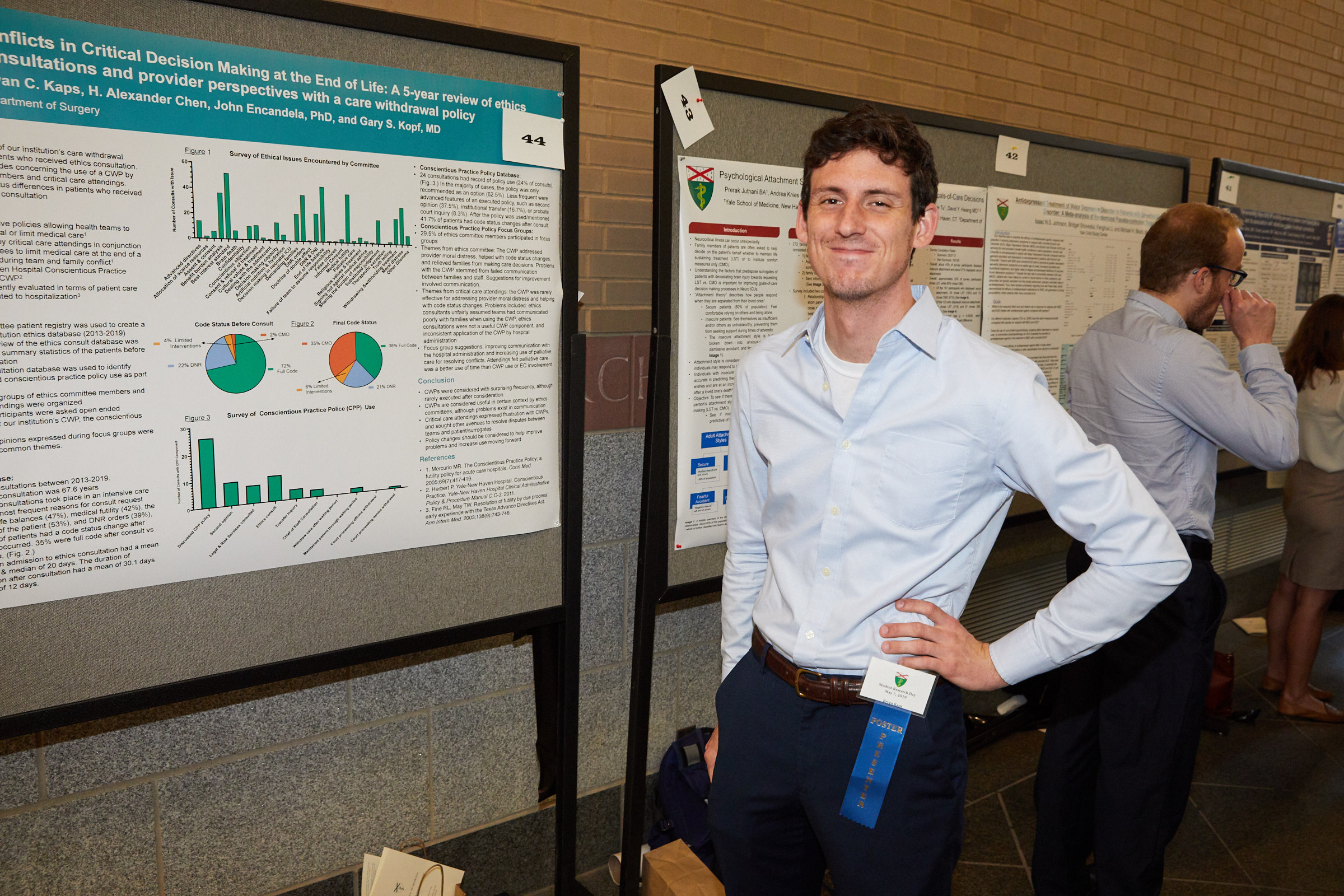
After the poster session, John Forrest, Jr., MD, professor of medicine and director, Office of Student Research, welcomed audience members to the Plenary Scientific Session, where the focus shifted to thesis research. Forrest shared some YSM history, including that when the thesis requirement was instituted in 1839, the YSM graduating class consisted of 15 male students, medical school lasted two years, and theses were hand-written. This year, 77 students submitted theses, 49% of whom are women. Additionally, many medical students now spend a fifth year at YSM to focus on research and about 20% of each class stay for even longer to obtain an MD-PhD.
Forrest emphasized the value of the thesis requirement, helping all students develop the ability to evaluate data critically and apply the scientific method to medicine, skills that are critical regardless of whether one’s career path is in research, patient care, teaching, administration, or some combination.
Forrest explained that a theses awards committee, comprised of 17 YSM faculty, chose five award-winning theses from among 23 that received honors from their respective departments. Before introducing each prize winner, Robert J. Alpern, MD, dean and Ensign Professor of Medicine, told the audience that Student Research Day is his “favorite day of the year,” praising the impressive quality of the theses.
The 2019 prize winners, their topics, and their supervisors are:
- Praneeth Sadda (MD), Methods for the Visualization of Placental Vasculature in Fetoscopic Surgery (Xenophon Papademetris, PhD, professor, Radiology & Biomedical Imaging)
- Rahil Rojiani (MD), Drumming to communicate emotion: Dual-brain imaging informs an intervention in a carceral setting (Joy Hirsch, PhD, professor, Psychiatry, Comparative Medicine, and Neuroscience)
- Noel Turner (MD), Evaluation of the mechanisms of anti-cancer immune responses (Marcus Bosenberg, MD-PhD, professor, Dermatology, Pathology, and Immunobiology)
- Maxwell Farina (MD/MBA), Localized hippocampal glutamine synthetase knockout: A novel model of mesial temporal lobe epilepsy (Tore Eid, MD-PhD, associate professor, Laboratory Medicine, Neurosurgery, and Molecular Physiology; associate director, Clinical Chemistry Laboratory, Yale-New Haven Hospital)
- Laura Yockey (MD-PhD), Innate immune responses in Zika virus control and pathogenesis (Akiko Iwasaki, PhD, Waldemar Von Zedtwitz Professor of Immunobiology and Molecular, Cellular and Developmental Biology; investigator, Howard Hughes Medical Institute)
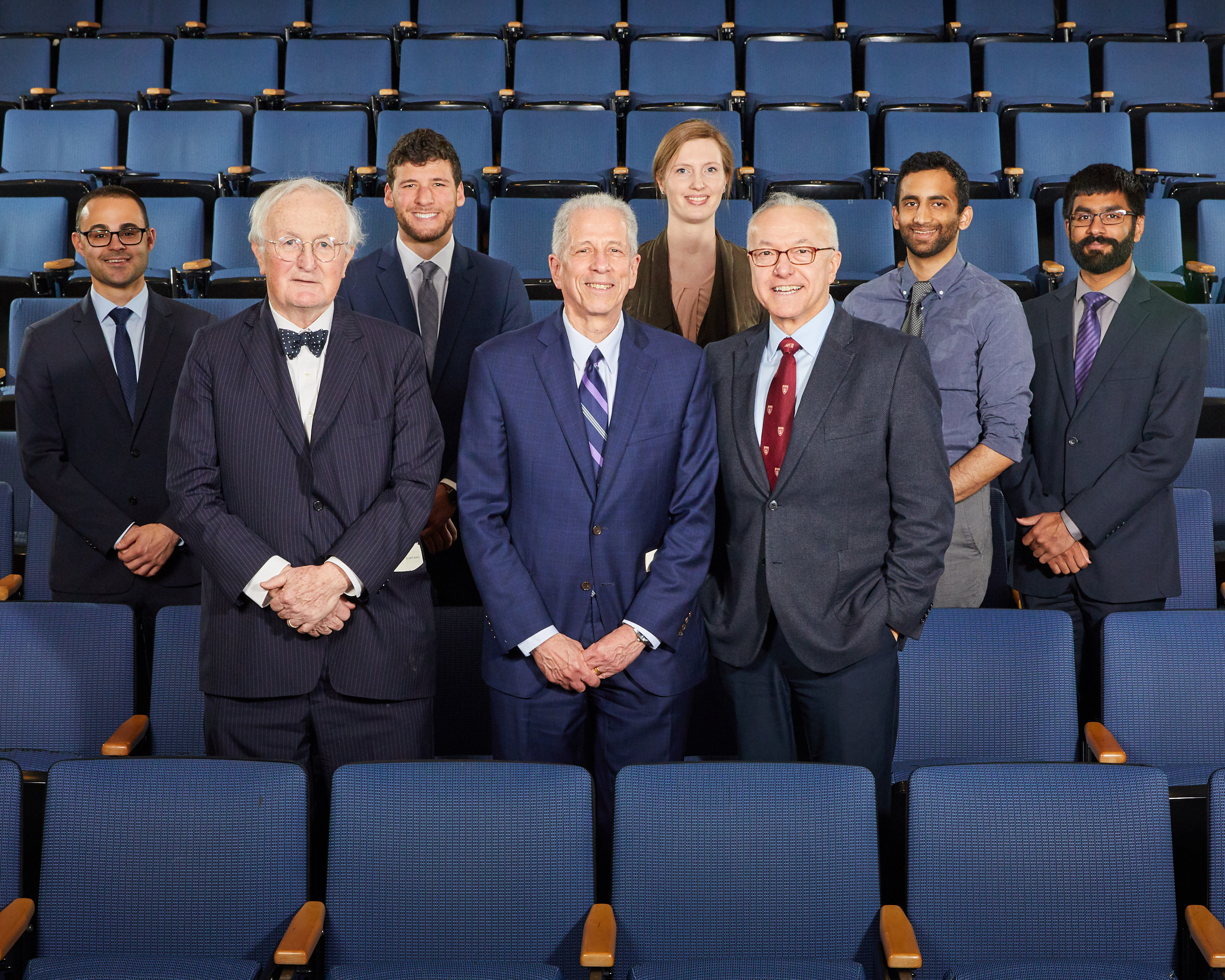
Farina described the biggest challenge during his project as “learning how to do the stereotactic viral injection surgeries consistently. It’s difficult, because you can’t tell where exactly the virus is injected until the brains are stained, which is usually a few months after the surgery. That long delay in action and feedback makes it more challenging to learn from mistakes and adjust technique.”
He went on to enthusiastically describe the most rewarding part of his research, “after months of optimizing the model and repeatedly failing to see any efficient enzyme knockout, I finally found a virus that was working well. I remember how thrilling it was to look down the microscope and see the virus spreading much further than we had anticipated and with total knockout of the enzyme in the transfected area. It’s amazing to look at a tiny section of brain and see an entire world of fluorescent green and orange cells in beautiful patterns. Especially being the first (and sometimes only) person to see that collection of cells, it’s a really special and humbling moment that reminds you that there’s so much we don’t know.”
For Sadda, the most challenging part of his research experience was “having to start from scratch. No one in the maternal-fetal medicine department had done work with computer-assisted interventions before, and the engineering faculty had never worked on any maternal-fetal medicine project before. So, when I started work on my thesis project, there were a lot of places where I ran into issues that none of my advisors or lab mates knew much about. For example, at one point we wanted to use a Polaris surgical tracking device, but no one in my lab knew how to operate one. I had to search around for old manuals, teach myself and others how to use it, and set up a software stack for working with it. It was tough work, but well worth it.”
It’s amazing to look at a tiny section of brain and see an entire world of fluorescent green and orange cells in beautiful patterns. Especially being the first (and sometimes only) person to see that collection of cells, it’s a really special and humbling moment that reminds you that there’s so much we don’t know.
Maxwell Farina, MD '19/MBA '19
Papademetris, Sadda’s thesis advisor, appreciated the challenge Sadda took on, and its potential impact. “When Praneeth started working with us, it was obvious that we were dealing with an unusually gifted and creative individual. At that point, I decided early to let him pursue his own interests. He essentially identified a clinical partner (Dr. Bahtiyar who directs the Fetal Care Center in the Ob-Gyn department), proceeded to identify the key problems, side-stepped my warnings about the incredible complexity of what he was attempting to do, and then proceeded to develop methods to address the problem in hand. This has opened a whole new line of research for us in the development of methods for both image-guidance and user training in image-guided fetoscopy.”
For Yockey, “the uncertainty of not knowing if a project will produce results or will be well-received is challenging. It is possible to spend a lot of time working on experiments that don't end up working out. I was lucky to get a lot of interesting results during my PhD, but I remember feeling very daunted at the beginning.” Turner similarly pointed to the challenge of undertaking a translational research project in the short span of a year, given the time-intensive and often finicky nature of bench work. For Turner, supportive mentors and a cohesive lab, as well as the redundancies he built into his projects, helped him deal with this pressure and ultimately produce good results.
Turner became interested in his topic during his third-year clinical rotation in internal medicine, after caring for a patient whose cancer medications were causing debilitating autoimmune side effects. He wanted to study how these medications engage the immune system, and he hoped his work would contribute to improving their efficacy and mitigating their toxicities. For Turner, “research is the most rewarding when it directly impacts patient care.”
Yockey explains that she started off studying influenza infection, but about nine months into her PhD shifted to working on Zika, right as the connection between Zika and microcephaly was becoming apparent. “I am interested in maternal-fetal health so this problem fit closely with my interests. From there, a lot of my thesis work was just following where interesting phenotypes and findings took us. I think that is one of the most fun parts of science: to follow your research into unexpected places. It also was so important to be at a place like Yale with so many talented researchers in many fields that are willing to collaborate.”
Iwasaki, Yockey’s thesis advisor, similarly describes how Yockey got focused on her thesis topic, and highlights the valuable impact of Yockey’s work. "Laura joined my lab with a strong interest in maternal-fetal health. Around that time, we started hearing about the devastating impact of Zika virus infection in pregnancy, causing microcephaly and other congenital diseases, and the possibility that this virus may be sexually transmitted. It was Laura who created the first sexual transmission model of Zika virus infection, and showed that vaginal infection of pregnant mice resulted in fetal brain infection and demise."
The prize winners were appreciative of the opportunity to participate in Student Research Day. Farina stated “it was an honor to share the stage with such talented researchers. Getting the chance to practice selling the story of your research and fielding questions from experts is immensely valuable, and I’m deeply grateful to YSM and the Office of Student Research for providing that opportunity.”
Yockey expressed similar sentiments, “I appreciated the opportunity to share my research with the broad audience of the medical school. I was impressed by how insightful the comments and questions were afterwards. It was nice to present my work to some of my clinical and MD-PhD program mentors, too.”
